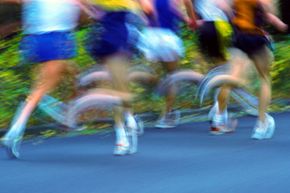If you're a seasoned triathlete, or even if you just finished your first 5K road race, you've probably heard something about lactate threshold training. But sometimes long, scientific-sounding terms can just be fancy names for snake oil. It's hard to distinguish the valuable stuff from the gimmicks. So, where does lactate threshold training fit in?
A chemist discovered lactic acid (or lactate) in the 18th century, but its applications to fitness weren't studied until the middle of the 20th century. Back then, scientists thought lactic acid was a waste product that was bad for muscles, and coaches warned athletes to stay below their lactate thresholds or suffer body aches and poor performance. Now scientists understand that lactate is beneficial to the muscles, as well as other parts of the body, including the brain. While physiologists keep learning more about what lactate does, coaches and trainers have learned ways to use the lactate threshold to an athlete's advantage.
Advertisement
So what exactly is the lactate threshold? Your body produces lactate every time you use your muscles, and the lactate in your blood usually stays at a pretty steady level. During intense exercise, though, lactate builds up faster than it can be flushed out of your blood -- this is your lactate threshold. When you cross your lactate threshold, you feel tired, and you might even feel a burn in your muscles.
Sports physiologists have learned, however, that your lactate threshold can be raised with proper training. Athletes can teach their bodies to use lactate more efficiently, so it takes longer to build up in their blood. Runners who raise their lactate threshold can pick up their pace and get to the finish line quicker.
So what is lactate, anyway? Read on to learn more about lactate and your muscles.
Advertisement
